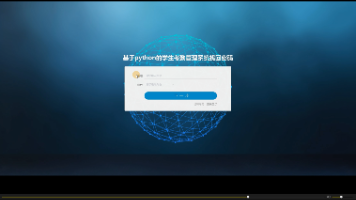第23章 AI在物联网中的应用
本章探讨了AI在物联网(IoT)中的关键应用,重点介绍了边缘计算与AI的结合、智能传感器网络以及预测性维护三大领域。通过实践项目展示了:1)使用TensorFlow Lite将云端模型部署到边缘设备;2)基于孤立森林算法检测传感器数据异常;3)利用随机森林预测设备故障。这些技术实现了低延迟、数据隐私保护和高效实时分析,为工业预警、环境监测等场景提供了智能化解决方案。代码示例涵盖了模型转换、异常检测
物联网(Internet of Things, IoT)连接了海量的物理设备,而AI则为这些设备赋予了智能。AI与IoT的结合,使得数据可以在源头被智能地处理和分析,从而实现更高效、更实时的应用。本章将探讨AI在IoT领域的关键应用,并提供代码实践。
23.1 边缘计算与AI
边缘计算(Edge Computing)是一种将计算和数据存储推向网络边缘(即设备或数据源头)的分布式计算范式。在IoT场景下,这意味着AI模型可以直接在传感器、摄像头等边缘设备上运行,而不是将所有数据都发送到云端。
- 优势:低延迟、节省带宽、保护数据隐私、离线可用性。
- 关键技术:模型轻量化(如MobileNet)、模型量化、硬件加速(如TPU Edge, Jetson Nano)以及TensorFlow Lite、ONNX Runtime等推理框架。
23.1.1 实践项目:使用TensorFlow Lite转换并运行模型
我们将一个预训练好的Keras图像分类模型转换为TensorFlow Lite(TFLite)格式,并模拟在边缘设备上进行推理。
23.1.1.1 Python代码实战
import tensorflow as tf
import numpy as np
from PIL import Image
# --- 步骤一:在云端或PC上,训练或加载一个模型并转换为TFLite格式 ---
# 1. 加载一个预训练的Keras模型(例如MobileNetV2)
model = tf.keras.applications.MobileNetV2(weights="imagenet")
# 2. 创建TFLite转换器
converter = tf.lite.TFLiteConverter.from_keras_model(model)
# 3. 进行转换
tflite_model = converter.convert()
# 4. 保存TFLite模型到文件
tflite_model_path = "mobilenetv2.tflite"
with open(tflite_model_path, 'wb') as f:
f.write(tflite_model)
print(f"模型已成功转换为TFLite格式并保存到 {tflite_model_path}")
# --- 步骤二:在模拟的边缘设备上,加载TFLite模型并进行推理 ---
print("\n--- 在边缘设备上运行TFLite模型 ---")
# 1. 加载TFLite模型并分配张量
interpreter = tf.lite.Interpreter(model_path=tflite_model_path)
interpreter.allocate_tensors()
# 2. 获取输入和输出张量的详细信息
input_details = interpreter.get_input_details()
output_details = interpreter.get_output_details()
# 3. 准备输入数据
# 加载一张图片并预处理以匹配模型输入要求 (224x224)
# 这里我们使用随机数据作为示例
input_shape = input_details[0]['shape']
input_data = np.array(np.random.random_sample(input_shape), dtype=np.float32)
# 4. 设置输入张量并调用解释器
interpreter.set_tensor(input_details[0]['index'], input_data)
interpreter.invoke()
# 5. 获取输出结果
output_data = interpreter.get_tensor(output_details[0]['index'])
predicted_class_id = np.argmax(output_data[0])
print(f"输入尺寸: {input_shape}")
print(f"输出尺寸: {output_data.shape}")
print(f"使用随机数据预测的类别ID: {predicted_class_id}")
23.1.1.2 项目总结
这个项目展示了将云端训练的复杂模型部署到资源受限的边缘设备上的核心流程。通过转换为TFLite格式,模型变得轻量且高效,使其能够在没有强大GPU或持续网络连接的IoT设备上运行,实现实时的本地智能。
23.2 智能传感器网络
智能传感器网络由大量能感知环境(如温度、湿度、振动、声音)的传感器组成。AI的任务是从这些传感器产生的大量时序数据中提取有价值的模式和洞察。
- 应用场景:环境监测、工业设备状态监控、可穿戴健康设备、智能农业。
23.2.1 实践项目:基于传感器数据的异常检测
我们将使用孤立森林(Isolation Forest)算法,对一段模拟的温度传感器数据进行异常点检测。
23.2.1.1 Python代码实战
import numpy as np
import pandas as pd
import matplotlib.pyplot as plt
from sklearn.ensemble import IsolationForest
# 1. 生成模拟的温度传感器数据
np.random.seed(42)
# 正常数据:在25度附近波动
normal_data = np.random.normal(loc=25, scale=1.5, size=300)
# 异常数据:插入一些突然的温度飙升或骤降
anomalies = np.array([50, 55, 2, -1, 48])
full_data = np.concatenate([normal_data, anomalies])
# 创建一个时间索引
time_index = pd.to_datetime(pd.date_range(start='2023-01-01', periods=len(full_data), freq='min'))
df = pd.DataFrame(data=full_data, index=time_index, columns=['temperature'])
# 2. 训练孤立森林模型
# contamination参数表示数据集中异常点的大致比例
model = IsolationForest(contamination=0.02, random_state=42)
model.fit(df[['temperature']])
# 3. 进行预测
df['anomaly_score'] = model.decision_function(df[['temperature']])
df['is_anomaly'] = model.predict(df[['temperature']]) # -1表示异常, 1表示正常
# 4. 可视化结果
anomaly_points = df[df['is_anomaly'] == -1]
plt.figure(figsize=(12, 6))
plt.plot(df.index, df['temperature'], label='Temperature')
plt.scatter(anomaly_points.index, anomaly_points['temperature'], color='red', label='Anomaly Detected', s=50)
plt.title('Temperature Sensor Anomaly Detection')
plt.xlabel('Time')
plt.ylabel('Temperature (°C)')
plt.legend()
plt.grid(True)
plt.show()
print("检测到的异常点:")
print(anomaly_points)
23.2.1.2 项目总结
通过孤立森林这样的无监督学习算法,AI可以自动从连续的传感器数据流中识别出与正常行为模式不符的异常事件。这在工业预警、环境监测和安全监控等领域至关重要。
23.3 预测性维护
预测性维护(Predictive Maintenance, PdM)是AI在工业物联网(IIoT)中最具价值的应用之一。它通过持续监控设备的运行状态数据(如振动、温度、压力),来预测设备何时可能发生故障,从而提前安排维护,避免代价高昂的意外停机。
- 核心任务:通常被建模为分类问题(预测未来一段时间内是否会故障)或回归问题(预测剩余使用寿命,Remaining Useful Life, RUL)。
23.3.1 实践项目:预测设备是否即将故障
我们将使用一个经典的涡轮风扇发动机退化模拟数据集,训练一个随机森林分类器来预测引擎是否会在未来30个周期内发生故障。
23.3.1.1 Python代码实战
import pandas as pd
from sklearn.ensemble import RandomForestClassifier
from sklearn.model_selection import train_test_split
from sklearn.metrics import accuracy_score, confusion_matrix
# 这是一个概念演示,实际运行需要下载NASA的C-MAPSS数据集
def predictive_maintenance_demo():
print("\n--- 预测性维护(概念演示) ---")
try:
# 1. 加载数据 (假设已下载并处理好)
# url = 'https://raw.githubusercontent.com/daydreamersjp/cmass-data-loader/master/data/train_FD001.txt'
# df = pd.read_csv(url, sep=' ', header=None)
# ... 经过复杂的数据预处理和特征工程 ...
# 我们创建模拟数据来演示流程
np.random.seed(0)
X = pd.DataFrame(np.random.rand(100, 10), columns=[f'sensor_{i}' for i in range(10)])
# 目标变量:1表示未来30周期内会故障,0表示不会
y = pd.Series(np.random.randint(0, 2, 100), name='will_fail_in_30_cycles')
# 2. 划分训练集和测试集
X_train, X_test, y_train, y_test = train_test_split(X, y, test_size=0.3, random_state=42)
# 3. 训练随机森林分类器
model = RandomForestClassifier(n_estimators=100, random_state=42)
model.fit(X_train, y_train)
# 4. 进行预测和评估
y_pred = model.predict(X_test)
acc = accuracy_score(y_test, y_pred)
cm = confusion_matrix(y_test, y_pred)
print(f"使用模拟数据训练的模型准确率: {acc:.4f}")
print("混淆矩阵:")
print(cm)
print("注意:这是一个概念演示,真实性能依赖于真实数据和特征工程。")
except Exception as e:
print(f"执行演示时出错: {e}")
predictive_maintenance_demo()
23.3.1.2 项目总结
预测性维护是数据驱动决策的典范。通过将传感器数据转化为对未来的预测,AI帮助企业从“被动响应式”维护转向“主动预测式”维护,极大地提升了生产效率和设备可靠性。
23.4 智能家居系统
智能家居是IoT技术最贴近日常生活的应用。AI在其中扮演着“智能大脑”的角色,学习用户习惯,自动化地控制家中的设备,提升生活的舒适性、便利性和安全性。
- 核心能力:自然语言交互(通过智能音箱)、用户行为模式学习、多设备联动、安防监控。
23.4.1 实践项目:模拟智能灯光控制系统
我们来构建一个简单的规则引擎,模拟一个能根据时间和是否有人在家来自动调节灯光的智能系统。
23.4.1.1 Python代码实战
import time
class SmartLightSystem:
def __init__(self):
self.is_light_on = False
self.brightness = 0
def control_light(self, current_hour, is_someone_home):
print(f"\n时间: {current_hour}:00, 家中是否有人: {is_someone_home}")
# 规则1: 如果是晚上(18点后)或清晨(7点前) 且 有人在家,则开灯
if (current_hour >= 18 or current_hour < 7) and is_someone_home:
if not self.is_light_on:
print("检测到有人在家且光线较暗,自动开灯。")
self.is_light_on = True
# 规则2: 深夜(23点后)调低亮度
if current_hour >= 23 or current_hour < 6:
self.brightness = 30
print("已进入深夜模式,灯光亮度调整为30%。")
else:
self.brightness = 80
print("灯光亮度设置为80%。")
else:
if self.is_light_on:
print("光线充足或家中无人,自动关灯。")
self.is_light_on = False
self.brightness = 0
else:
print("灯光保持关闭状态。")
# 模拟一天中的不同场景
light_system = SmartLightSystem()
scenarios = [
(8, True), # 白天在家
(15, False), # 下午离家
(19, True), # 晚上回家
(23, True) # 深夜在家
]
for hour, presence in scenarios:
light_system.control_light(hour, presence)
23.4.1.2 项目总结
这个简单的项目揭示了智能家居系统的核心逻辑:通过感知环境状态(时间、光照、人的位置)和用户行为,自动执行预设的规则或学习到的策略。真正的智能家居系统会使用机器学习来替代硬编码的规则,从而提供更个性化、更自适应的体验。
23.5 总结
本章我们探索了AI在物联网世界中的四大应用象限。边缘计算与AI将智能带到了数据产生的源头,实现了低延迟的本地处理。智能传感器网络让我们能够从海量数据中发现异常和模式。预测性维护彻底改变了工业界的维护范式,带来了巨大的经济效益。而智能家居系统则将AI的便利带入了我们的日常生活。随着IoT设备的指数级增长,AI将成为释放这些设备全部潜能的关键。
更多推荐
 已为社区贡献6条内容
已为社区贡献6条内容








所有评论(0)